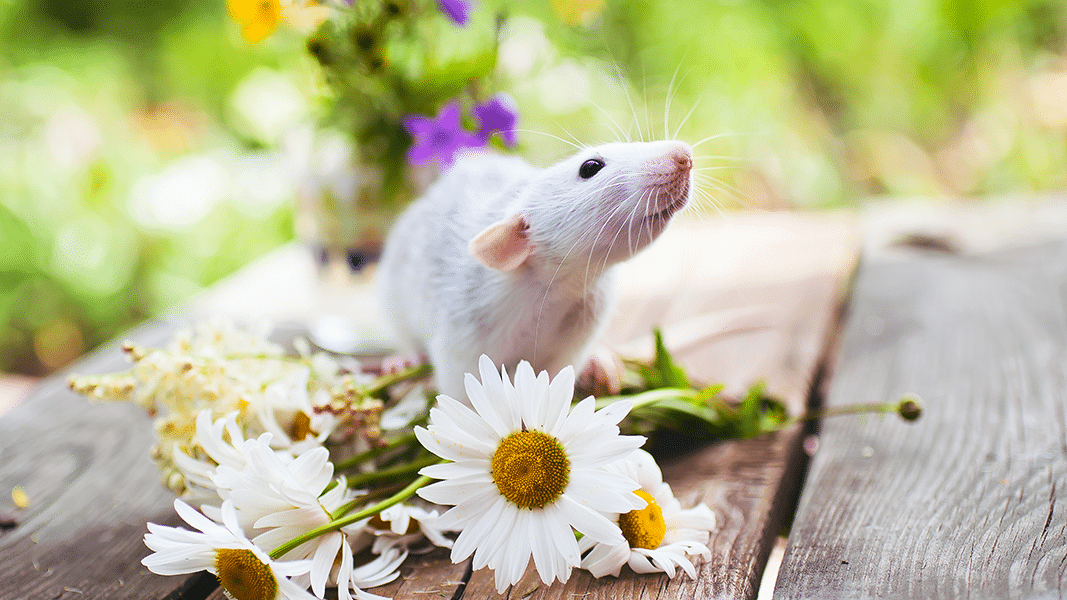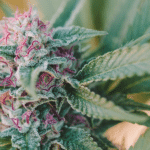The huge popularity of cannabidiol (CBD), a non-intoxicating component of cannabis, has helped to destigmatize the plant and restore its reputation as an important medicinal herb. But bogus science and inept reporting continue to distort how we understand the benefits and risks of CBD and cannabis.
An article by Mike Adams in Forbes online rang alarm bells by asserting that CBD “could be damaging our livers in the same way as alcohol and other drugs.” This sensational claim was based on a dubious study of CBD and liver toxicity conducted by researchers (Ewing et al) at the University of Arkansas in Little Rock – except the damage discussed in the study was unrelated to alcohol toxicity and “our livers” actually refers to mouse livers.
The Little Rock study made no mention of humans, which is a hugely important distinction. Moreover, in the real world CBD consumers are not ingesting 0.25% of their body weight – the maximal dose that Ewing et al used in their study of liver toxicity.1
Nevertheless, according to Forbes, “People that use CBD are at an elevated risk for liver toxicity.” And “[CBD] may actually be just as harmful to their livers” as “conventional pain relievers, like acetaminophen.” These statements are clearly unsupported by the current literature.
Mega-Dosing Mice
The breathless reporting in Forbes focuses on a single, flawed, preclinical study and exaggerates it to the point of falsehood. Yet if there’s a saving grace of the Forbes article, it’s that it gets much less wrong than the study itself. The study is freely available from Molecules, a journal published by the Multidisciplinary Digital Publishing Institute (MDPI).
A close examination of the Molecules study reveals a Pandora’s box of strange statements, problematic publishing and unreasonable experimental design. On the first page, the abstract makes a claim that is fundamentally impossible, stating that, with chronic administration of CBD, “75% of mice gavaged with 615 mg/kg developed a moribund condition.” But there were only 6 animals that received this dose! One doesn’t need an advanced degree in science or math to recognize that something is amiss. Seventy-five percent of six equals 4.5.
According to the Little Rock researchers, four-and-a-half mice died because of the dangerous drug known as CBD, while somehow one-and-half mice survived.
Reading on, it only gets worse.
The experimental set-up is succinct. Scientists force-fed mice a single dose of CBD, ranging from the supposedly “low” dosage of 246 mg/kg up to a mega-dose of 2460 mg/kg CBD. That means for every kilogram of body weight, they gave the mice about 2.5 grams of CBD, which had been formulated as a hexane extract2 from cannabis supplied by the National Institute on Drug Abuse (NIDA). Hexane, it bears mentioning, is a neurotoxin.
The maximum human dosage recommended for the CBD-isolate Epidiolex is 20 mg/kg, which is over 100x less than what the Little Rock researchers force fed their experimental mice. They also tried smaller doses (ranging between 61.5 to 615 mg/kg) of CBD, which was given daily for 10 consecutive days.
Despite these ridiculous dosages, Ewing et al.3 claim their study accurately represents human experience, insisting that the equivalent human dose is 12.3 times lower because of allometric scaling (which we will discuss momentarily). This is – at best – an unverified assumption. More likely, it’s just plain wrong.
Citation Madness
Before presenting their results in Molecules, the introduction tips the authors’ hand, revealing that the study is a hit piece against CBD, not legitimate scientific work.
When it comes to cited evidence, a double standard is obvious. The authors disparage the significance of positive medical findings about CBD (such as CBD’s anti-inflammatory and antioxidant properties) by citing only in vitro research.4,5 Yet a sentence later, they tout a score of harms allegedly attributable to CBD based on… in vitro and preclinical work. Even these claims are muddled by misinterpretation.
The Little Rock authors claim: “numerous reports have demonstrated neurological, cardiovascular and reproductive toxicities subsequent to CBD use.” Yet, eight of the nine sources cited to buttress this claim do not involve humans. Only one of the citations is based on human research, and it did not show toxicity. The human study, led by Saoirse O’Sullivan, actually showed a decrease in blood pressure after consuming CBD (600 mg or roughly 10 mg/kg). O’Sullivan and her colleagues at the University of Nottingham concluded that perhaps “CBD has a role in the treatment of cardiovascular disorders.” Yet the Arkansas team misrepresents O’Sullivan’s work as proof that CBD is cardiotoxic.
When contacted by Project CBD, O’Sullivan said, “Our research study showing that CBD causes a small reduction in resting and stress-induced blood pressure does not support the authors claim that we demonstrated cardiovascular toxicity of CBD. In fact, most of our work is about the potential protective effects of CBD in the cardiovascular system.”
The madness of citations continues to develop with the Arkansas researchers noting that one trial of Epidiolex (an FDA-approved pharmaceutical CBD isolate extracted from cannabis) demonstrated 93% of CBD users experience adverse events (aka side effects). Wow! CBD must be problematic for nearly everyone! Until you read the primary source, which states that adverse events “were reported in 93% of the patients in the cannabidiol group and 75% of the patients in the placebo group” [emphasis added]. These patients take many anti-epileptic drugs in addition to their CBD treatment. The relevant number is the fraction of side effects attributable to CBD, not the total number. But the authors chose to ignore such subtleties in favor of aggrandizing harm. As a consequence, they overlook an opportunity to review problems that CBD could actually cause, according to this Epidiolex trial.
Reading on, halfway through the second page (of the 17-page Molecules article), problems continue to pile up. The authors appear to undermine their own conjured fears: according to one lab’s analysis, dosages of “commercially-available products ranged from as little to 2.2 mg to as much as 22.3 mg, further amplifying concerns of potential toxicity.” First of all, the lab report states the smallest amount was 1.3 mg, not 2.2 mg.6 Secondly, 22.3 mg is not a large dose by any means. Humans have been reported to ingest up to a couple thousand milligrams of CBD without ill effect.
By the time the reader arrives at the results section of the Molecules article, the study’s credibility has been thoroughly demolished by the issues described above. And then there are the results. According to this section, huge doses (738-2460 mg/kg) of CBD caused problems, including altered levels of liver enzymes and gene expression related to metabolism. In the chronic administration group, the two highest doses caused similar problems. Dosages this high are unheard of in human studies. Some mice in the chronic administration group died from CBD treatment, but the authors neglect to mention how many. The only number reported is the impossible four-and-a half-mice mentioned in the abstract.
New Data, Same Old Story
“Regardless of your feelings on this particular study, it is hard to argue with dead mice,” the Forbes article blithely asserts. Nonsense. Not enough attention is paid to that last word – mice. Even if we suspend our disbelief and look past every problem described thus far, a dead mouse (or half a mouse) isn’t proof of what happens to a human.
The search for a lethal dose of cannabinoids is nothing new – one of the earliest efforts to kill an animal with a gigantic dose of THC was described in a 1972 paper by scientists at the Mason Research Institute in Worcester, MA. In their quest to prove the dangers of THC, they attempted to kill almost 400 rats, a couple dozen beagle dogs, and some rhesus monkeys. The rat dosages ranged from 225-3600 mg/kg of orally administered THC, a higher amount than the CBD dosage used in the Little Rock experiment.
It turned out that rats could be killed by THC, though it took roughly 1000 mg/kg. Interpreting this with allometric scaling, we expect that monkeys would have a lethally toxic response to 500 mg/kg of THC (see table below for approximate scaling factors). This translates to about 10 grams of pure THC for a human. But it’s wrong. The researchers weren’t able to overdose the monkeys7 – not with an allometrically scaled dose, nor when they tried a much higher dosage of 9000 mg/kg (or just under 1% of the monkey’s bodyweight).
In a typical 65 kg human, 1% of body weight would amount to 585 grams of THC. That’s over a pound of pure THC. And that concentration wasn’t enough for a lethal outcome.8 The dose used in monkeys is the one most likely to translate to humans, and it underscores – if anything – the importance of not extrapolating from one species to another.
Allometric Scaling
Small animals, like a mouse or humming bird, are more active than large animals, like a human or raven. It’s not just a matter of physical movement – metabolism is also faster among small animals. So a mouse will clear drugs out of its system more quickly than a human. This is one major reason why drug dosages are not the same between lab animals and humans in the clinic.
Allometric scaling is a useful rule of thumb that helps to overcome this issue. It assumes that drug doses can roughly be scaled from one animal to another based on their body weight and body-mass index (BMI).
| To convert animal dose in mg/kg to HED in mg/kg, either: | ||||
| Species | Reference body weight (kg) | Working weight range (kg) | Divide animal dose by | Multiply animal dose by |
| Human | 60 | – | – | – |
| Mouse | 0.02 | 0.011-0.0034 | 12.3 | 0.081 |
| Hamster | 0.08 | 0.047-0.157 | 7.4 | 0.135 |
| Rat | 0.015 | 0.08-0.027 | 6.2 | 0.162 |
| Ferret | 0.3 | 0.16-0.54 | 5.3 | 0.189 |
| Guinea pig | 0.4 | 0.208-0.700 | 4.6 | 0.216 |
| Rabbit | 1.8 | 0.90-3.0 | 3.1 | 0.324 |
| Dog | 10 | 5-17 | 1.8 | 0.541 |
| Monkey (rhesus) | 3 | 1.4-4.9 | 3.1 | 0.324 |
| Marmoset | 0.35 | 0.14-0.72 | 6.2 | 0.162 |
| Squirrel monkey | 0.6 | 0.29-0.97 | 5.3 | 0.189 |
| Baboon | 12 | 7-23 | 1.8 | 0.541 |
| Micro pig | 20 | 10-33 | 1.4 | 0.73 |
| Mini pig | 40 | 25-64 | 1.1 | 0.946 |
Human equivalent dose calculation based on body surface area. Based on Nair, A & Jacob S, 2016. doi: 10.4103/0976-0105.177703.
This scaling factor is often used to find a starting dosage for drugs that have never been tested on humans, which is not the case for CBD, a compound with a well-established human safety record that the Little Rock scientists and the Forbes journalist studiously avoid mentioning.
Using allometric scaling to reinterpret preclinical work needs to be justified. And, in fact, allometric scaling of toxicity may not pertain to cannabinoids.9 The linear scaling factor is predicated on properties that these oily compounds do not possess. For example, it works best when the drug of interest floats freely in the bloodstream, yet over 99% of CBD (and THC) is protein-bound, not free. Furthermore, the ridiculously high doses in this study will saturate the body’s metabolic machinery, preventing relevant dose-extrapolations.
Without a doubt, the dose used in a mouse experiment does not translate directly to human dosing. However, by choosing a flawed scaling factor, the authors’ report of “human equivalents” becomes irrelevant. Recall that the THC study indicates we could increase a primate dose to 10x larger than the rat dosage without toxicity, the opposite of what allometric scaling suggests.
All this just underscores the importance of limiting conclusions to what we can establish. The Little Rock study shows that ingesting huge doses of CBD – on the order of 0.25% of one’s weight – is harmful to mice. It says nothing about humans. It says nothing about realistic dosing. What it does say is little more than a reflection of the authors’ biases.
Peer-Review Politics
How did this problematic article get published in Molecules? Isn’t peer review supposed to correct flawed science?
Ideally peer review is challenging and constructive, forcing scientists to do better research. But unfortunately, not all peer review aspires to the same goal.10 Peer review can also be a venue for reinforcing old boy networks and engaging in political power plays hidden behind anonymity. In some cases, peer review is just a rubber stamp of acceptance so long as the authors pay hefty “article processing charges.”
Science journals, much like the input provided by peer reviewers, vary in quality. MDPI, which publishes the journal Molecules, has been called a predatory publisher.11 MDPI has been criticized for publishing unsound articles, though this is too great a controversy12 to tackle here. Even if such allegations are true, it doesn’t mean that good work can’t end up in one of MDPI’s 213 journals. But it underscores the importance of checking scientific work, rather than diligently repeating and amplifying whatever claims are presented.
Another red flag: The turnaround from submission to acceptance of the Molecules article claiming CBD causes liver toxicity was 18 days, which, while not impossible, is nevertheless very quick.13 Unlike some other journals, Molecules does not report when – or if – reviewers requested revisions to the article. But in this case, revisions had to be requested, because the reference list states that some citations were accessed after the submission date: see references 25-27. These citations were viewed on the same day that Molecules accepted the article. At best, this means a revised draft was submitted and accepted on the same day, making it difficult to believe that a proper peer review was performed. The Little Rock authors did not immediately respond to a request for comment on this issue.
CBD & Acetaminophen
Can we call this article one bad study and move on? Well, no, because Molecules has already published another similar article. The same journal and the same irrelevance, with a few more authors and a few more unbelievable claims.
The most recent study, published in Molecules a month after the first liver toxicity article, doesn’t improve on much. In their second report, they assess a potential interaction between CBD and acetaminophen (sold as Tylenol or paracetamol) in female mice.
Similar to the first study, they use hexane, a neurotoxin, to extract cannabinoids from NIDA-supplied cannabis. The amount of residual solvent is listed as < 0.5%, or 5000 μg/g. Such a product would not be legal to sell in California’s regulated marijuana market, which has set a limit of 290 μg/g of hexane in cannabis extracts. The authors did not immediately reply to a request for clarification of the hexane content.14
The doses of CBD employed in the second Little Rock study are quite a bit lower than the first, since acetaminophen stresses the liver significantly on its own. A new oddity is the choice of administration. The researchers set up a feeding tube to administer high doses of CBD, but instead decided to inject 400 mg/kg acetaminophen into the mice. The authors do not state how this dosage would be allometrically scaled to a human taking Tylenol.
Three of the eight mice treated with acetaminophen and the supposedly low dose of CBD (116 mg/kg) died within a few hours. Curiously, none of the mice that were force fed a higher dose of CBD died. The Little Rock researchers explained this peculiar outcome by invoking the biphasic effect, also known as hormesis or a U-shaped dose-response curve, which refers to the existence of a sweet spot for optimal dosing. Outside of a particular dosage range – too low or too high – cannabinoids can lose their efficacy and even cause the opposite of an expected effect.
Cannabinoids often have a biphasic dose-response, but it’s unreasonable to claim without further explanation that this applies to CBD’s alleged toxicity. Imagine if you had drunk a poison and the cure was to drink a lot more of the same poison. That is essentially how the authors try to justify their results.
We could once again go through every citation, but the biases that undermine this publication are clear from the discussion, as Ewing et al. try to have it both ways. The consistency of their results (with a select choice of citations) shows that the model is accurate. The inconsistencies with other studies disprove any others’ claims to the safety of CBD.
The discussion after the first Molecules study displays the same bias. Positive preclinical results that suggest medical benefits don’t establish much, but absurd preclinical harms demonstrate that CBD “poses a risk for liver injury.” Ewing et al.’s research is valid because sometimes it seems to be consistent with data found in other papers. Yet when their findings contradict other research, it calls “into question [CBD’s] claimed ‘antioxidant’ properties” and other potential benefits.
Crying Wolf
One problem with these far-fetched studies that purport to demonstrate CBD’s harmful effects is that they undermine serious research into real risks.15 High doses of CBD – usually around 20-50 mg/kg – can cause issues with the liver, but there are important caveats. Numerous publications from the makers of Epidiolex have shed light on potential risks of CBD. Project CBD has been reporting on these dangers for years.16
One issue is CBD’s ability to inhibit drug-metabolizing enzymes. This usually occurs when someone is taking hundreds or thousands of milligrams of CBD per day.
Of greater concern is the reported elevation in liver enzymes called ALT and AST. This occurs in roughly 5-15% of kids in Epidiolex trials, and nearly every report involves the concurrent use of valproate, a powerful anti-epileptic drug that can cause problems in and of itself.17 This could be viewed as a severe drug-drug interaction. However, many neurologists indicate that the combination of CBD and valproate can be an effective epilepsy treatment. Thus, doctors find it is worth adding CBD to a treatment regime that includes valproate, with the understanding that patients’ liver function will need to be monitored. The co-administration of CBD and clobazam, which also has a high likelihood of drug interactions, is another combination that pediatric neurologists find works well – at least anecdotally.
So, people try CBD along with their other medications, but they stop or reduce the dose if there are liver problems (which needs to be monitored by a doctor, not the patient). These issues resolve when people stop taking CBD or reduce their dose, according to many reports. Once there is an awareness of the risk, it can be simple for a doctor to manage.
Calling such problems “damage” is an overstatement – an elevation in liver enzymes is indicative of stress on the liver that could cause damage if it continues unabated. Currently, there are no reports of lasting harm when CBD treatment was ceased.
It’s unreasonable to see temporary, reversible stress when cannabidiol is combined with other drugs and insist that this shows CBD is hepatotoxic.
More Research Is Needed
All three articles – the one in Forbes and both papers by Ewing et al. – conclude with the predictable mantra “more research is needed.” (A recent follow-up story in Forbes by Mike Adams called yet again for “more research,” while repeating the same distortions about liver toxicity.) “More research” is an easy fallback phrase, because no one is going to argue that we should know less about our medicine. But “more” is the wrong word. Better research is what’s needed. Better reporting, which checks scientists’ claims rather than ignorantly amplifying them. Better studies, which seek to assess the human consequences of CBD consumption. And better thinking, especially when it comes to interpreting human and non-human research.
Preclinical research is at once frustrating and exciting. It provides a precisely controllable environment to test ideas, a scientist’s sandbox. But the outcome is always indirect – unless someone is seeking to treat a sick pet mouse, results from animal models of human disease can only provide ideas and guidance for follow-up in humans, not definitive conclusions.
The issue here is not one bad study in a science journal. It is the pernicious manifestation of investigator bias. Ewing et al. see the worst in any report on CBD. CBD reduces blood pressure in humans? They’ll call it toxic to the cardiovascular system. CBD slightly decreases the weight of mice? They spark fears it causes you to waste away. But if one dares to say it may help someone fall asleep, or reduce their arthritic pain or opioid cravings, well that’s just anecdotal, it’s just preclinical, it’s just a few isolated reports.
Imagine if their eager trust were extended to the much more plentiful medical research on CBD. If we were to interpret all mouse studies on cannabinoids as applicable to humans, we would find hundreds of papers showing that THC and CBD kill tumors, quell an overactive immune system, reverse Alzheimer’s, heal traumatic brain injuries, and so on. In fact, quite a few animal studies show that CBD is protective in certain liver diseases, like alcohol-induced steatosis and nonalcoholic fatty liver disease.
Ultimately, some of the preclinical work will translate to human experience, though most of it won’t. That is what motivates so much excitement among cannabis advocates, who are pushing back against the racial and social consequences of terrible drug policy, while also promoting cannabis therapeutics that may improve poorly-treated medical conditions. Clearly epilepsy is one such example. Multiple sclerosis is another. Neuropathic pain and reduced need for opioids is a third area with substantial evidence. For autoimmune and other inflammatory diseases there is good reason to hope, though not certainty. And, of course, there will be risks: not everyone benefits from cannabis use and some harms will inevitably emerge.
Instead of holding scientists accountable, some journalists merely act as stenographers, repeating and amplifying allegations instead of scrutinizing them. The need for a controversial, engaging story often overtakes the desire for accurate reporting. Regarding claims that CBD causes liver damage, the Forbes writer failed to probe key questions. Are the research methods valid? Do the researchers apply consistent standards in their assessment of evidence? Are the conclusions a reasonable interpretation of the results? And what ever happened to the one-and-a-half mice that survived the massive doses of CBD?
More information about CBD-Drug interactions:
Abstracts:
- “Drug–drug interaction between clobazam and cannabidiol in children with refractory epilepsy”
- “Trial of Cannabidiol for Drug-Resistant Seizures in the Dravet Syndrome”
- “Cannabidiol in patients with seizures associated with Lennox-Gastaut syndrome…”
- “Effect of Cannabidiol on Drop Seizures in the Lennox–Gastaut Syndrome”
- “Interactions between cannabidiol and commonly used antiepileptic drugs”
- “A Phase 1, Open‐Label, Pharmacokinetic Trial to Investigate Possible Drug‐Drug Interactions…
Project CBD:
- “Project CBD on Drug Interactions”
- “Educational Primer on Cannabinoid-Drug Interactions”
- “CBD-Drug Interactions: Role of Cytochrome P450”
- “Combining CBD with Anti-Epileptic Drugs”
- “CBD & Organ Transplant”
Adrian Devitt-Lee is a research scientist and longtime Project CBD contributor. © Copyright, Project CBD. May not be reprinted without permission.
Footnotes
- For a 65 kg human (143 lbs), the dose amounts to almost 160 grams of CBD.
- It is mind-boggling that the researchers wouldn’t use ethanol, butane, or carbon dioxide for extraction. These are the primary methods used in the cannabis industry.
- In biomedical science, the first author is typically the person who primarily wrote the paper, while the last author is the principal investigator. But the Author Contributions section indicates that the first author, Laura Ewing, was not involved in writing the original draft.
- Specifically, they state “[t]he vast majority of those effects, however, were documented either in vitro or in clinical trials with equivocal results [4,5].” The schedule 1 status of cannabis– which has made it near impossible to test medical effects of plant-derived cannabinoids in humans – is to blame for the high prevalence of preclinical studies.
- One of the two studies they chose to cite was a 1998 publication that formed the basis for the US government’s patent on cannabinoids as neuroprotectants and antioxidants. It involved three scientists, including Aidan Hampson, the Nobel laureate Julius Axelrod, and Maurizio Grimaldi.
- At first I wondered whether the ConsumerLab report had been changed between the scientists accessing it and my attempt to confirm the number. But in their references, the authors claim they accessed the report on April 29th, 2019. An archive of the report dated April 20th shows the number has not changed.
- Two dogs in the experiment died, apparently due to complications with the force-feeding procedure.
- It may not have been lethal, but it certainly wasn’t benign. After a brief period of frenetic activity, “the monkeys assumed a sitting position, often facing the back of their cages, and buried their faces in their hands or between their knees.” They remained in the position for up to 2 full days.
- Cannabinoids are atypical drugs in a number of respects. This is largely due to their oiliness, which allows them to sit on the interfaces of biological membranes, rather than being contained by them. They have a long half life and large volume of distribution. They are also poorly absorbed through the digestive tract.
- Peer review is also not a magic wand that corrects all errors; there is an assumption of good faith. Reviewers rarely check the consistency of the data, let alone an article’s references, which is how the misrepresentation (unintentional or not) of references 13 and 27 got through. These mix-ups are explained in the text and footnote 6, respectively.
- “Predatory” is an unfortunate catch-all term that doesn’t well represent the variety of behaviors of journals. The major criticism here is that such journals will publish anything without peer-review as long as the authors pay hefty publication charges. (It costs 1800 Swiss Francs to publish in Molecules, where these claims of CBD causing liver damage have been made.) MDPI was once listed as a predatory publisher, but they successfully appealed to be taken off the list in 2015.
- There have been incidents where editors have resigned from MDPI journals in protest of being pressured to accept poor quality research. Other discussions of MDPI’s history and controversies can be found here, here, here, and here. The major issue is not that bad science is published – that happens in even the most respected journals. But refusing to retract clearly flawed research suggests that disseminating accurate information is not the publisher’s priority. MDPI has defended itself for publishing controversial articles, while others insist MDPI keeps bad articles in circulation to draw citations from more legitimate authors who publish critiques.
- Then again, peer review can frustratingly drag on for over a year.
- There is a problem in the stated methodology of the first study. The authors make the claim that “[t]he final extract was analyzed using GC/MS for its cannabinoid content, solvent residue, heavy metals, bacterial and fungal counts and aflatoxin.” Many of these – like heavy metals and bacterial counts – cannot be assessed using GC/MS.
- Overstating harms is not without consequence. When people realize that some claims are exaggerated, they begin to lose faith in truthful warnings. This is the classic failure of the DARE drug-prevention program.
- Alexandra Geffrey, along with Elizabeth Thiele and other at Massachusetts General Hospital published a major study on CBD-drug interactions in June of 2015. This appears to be the first clinical report of CBD’s potential to interact with epilepsy medications. Project CBD reported on this shortly thereafter. Since then there have been numerous scientific publications that address the potential for cannabinoid-pharmaceutical interactions, which Project CBD consistently highlights in the interest of safety (see the references).
- Valproate is not a gentle medicine. It is used in preclinical research to create an animal model of autism.









